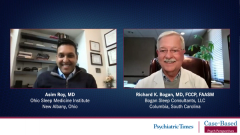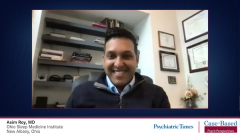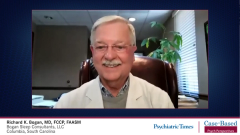
Unmet Needs in Narcolepsy Treatment
Drs Asim Roy and Richard K. Bogan discuss remaining unmet needs in the therapeutic landscape for narcolepsy.
Episodes in this series

Richard K. Bogan, MD, FCCP, FAASM: Can you give us an introduction to why we are looking at other medicines? Is there an unmet need, and what are we looking at?
Asim Roy, MD: When we go back to what’s the underlying physiology in type 1 narcolepsy, it’s orexin deficiency. We clearly know that today. With everything we’ve talked about up to this point, none of them target orexin, they’re all targeting these downstream neurotransmitters. For me, that’s a huge potential future therapeutic space, if we can get to orexin and enhance the orexin system, the potential benefit of these downstream neurotransmitters might inherently occur without relying on these other drugs. That smoothness or that stability of wakefulness might occur when we have orexin agonists. There are a lot of unknowns still, but we suspect that by targeting the underlying…it’s like giving a type 1 diabetic metformin, or a GLP-1 [glucagon-like peptide-1 agonist], or whatever, you’re not giving them insulin, which is what they’re not making. They still need insulin. That’s how I look at type 1 narcolepsy. If we can’t give them orexin, we’re “Band-Aiding” the situation at this point.
Richard K. Bogan, MD, FCCP, FAASM: I think the Band-Aid is helping a lot, but there are unmet needs as you say.
Asim Roy, MD: There’s still a huge unmet need, but it’s better than nothing. These patients, usually when we see them, if nothing’s worked for them or they’ve had a lot of adverse effects and they’re really stuck, they have no solution, a lot of them are left pretty disabled. They can’t work or they can’t function as well as they would like.
Richard K. Bogan, MD, FCCP, FAASM: I think an important message from an orexin standpoint is, orexin is so important because it’s not only promoting the awake circuits, but it’s doing other things. It makes us breathe more. We breathe more when we’re awake, so we breathe more. It affects the hypothalamic-pituitary axis. Orexin does a lot of stuff, so it’s going to be really interesting to see what these orexin agonists do. How much effect do they have on the REM dissociative symptoms at night, as well as the cataplexy? That will be pretty fascinating. We’re early into the research, and of course, we encourage everyone to watch for this. And people are picking off some of the other receptors, norepinephrine reuptake inhibitors, and other ones.
Asim Roy, MD: Correct. There are more histamine agonists coming.
Richard K. Bogan, MD, FCCP, FAASM: As you say, they’re downstream, but that doesn’t mean they’re not going to be helpful. It’ll be really interesting to see where this research is going.
Transcript Edited for Clarity
Newsletter
Receive trusted psychiatric news, expert analysis, and clinical insights — subscribe today to support your practice and your patients.




















